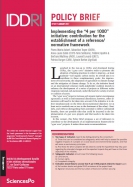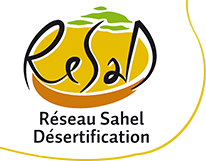Implementing the “4 per 1000” initiative: contribution for the establishment of a reference/normative framework

Présentation du document
Launched in the run-up to COP21 and developed during COP22, the “4 per 1000” initiative seeks to promote the adoption of farming practices in order to improve—at least maintain—soil organic carbon stocks. Its overall aim is to contribute to three complementary goals: the improvement of food security, the adaptation of agriculture to climate change and the mitigation of climate change. To do so, the initiative based on an international voluntary multi-stakeholder coalition intends to enhance the development of a series of projects at different scales (regional, national, sub-national), under the lead of a variety of actors or coalition of actors.
This Policy Brief proposes a set of indicators to contribute to the development of an implementation framework for “4 per 1000” projects. It makes three main recommendations.
1) Two types of indicators need to be distinguished by the consortium:
- Those that can be considered as safeguards, which will help to assess the possible negative impacts of a project on crucial social and environmental aspects, and that will serve as exclusionary principles.
- And those for which projects will be asked to clarify the hypothesis they rely upon regarding the intended changes and the expected impacts they will have on the three objectives of the initiative.
2) Safeguards indicators should cover the following issues:
- Land tenure.
- Human rights.
- Ecosystems integrity.
3) Indicators should help to uncover how 4 per 1000 projects intend to impact upon:
- Soil carbon stocks and global GHG emissions at the project level.
- Agrarian structures and the four pillars of food and nutrition security.
